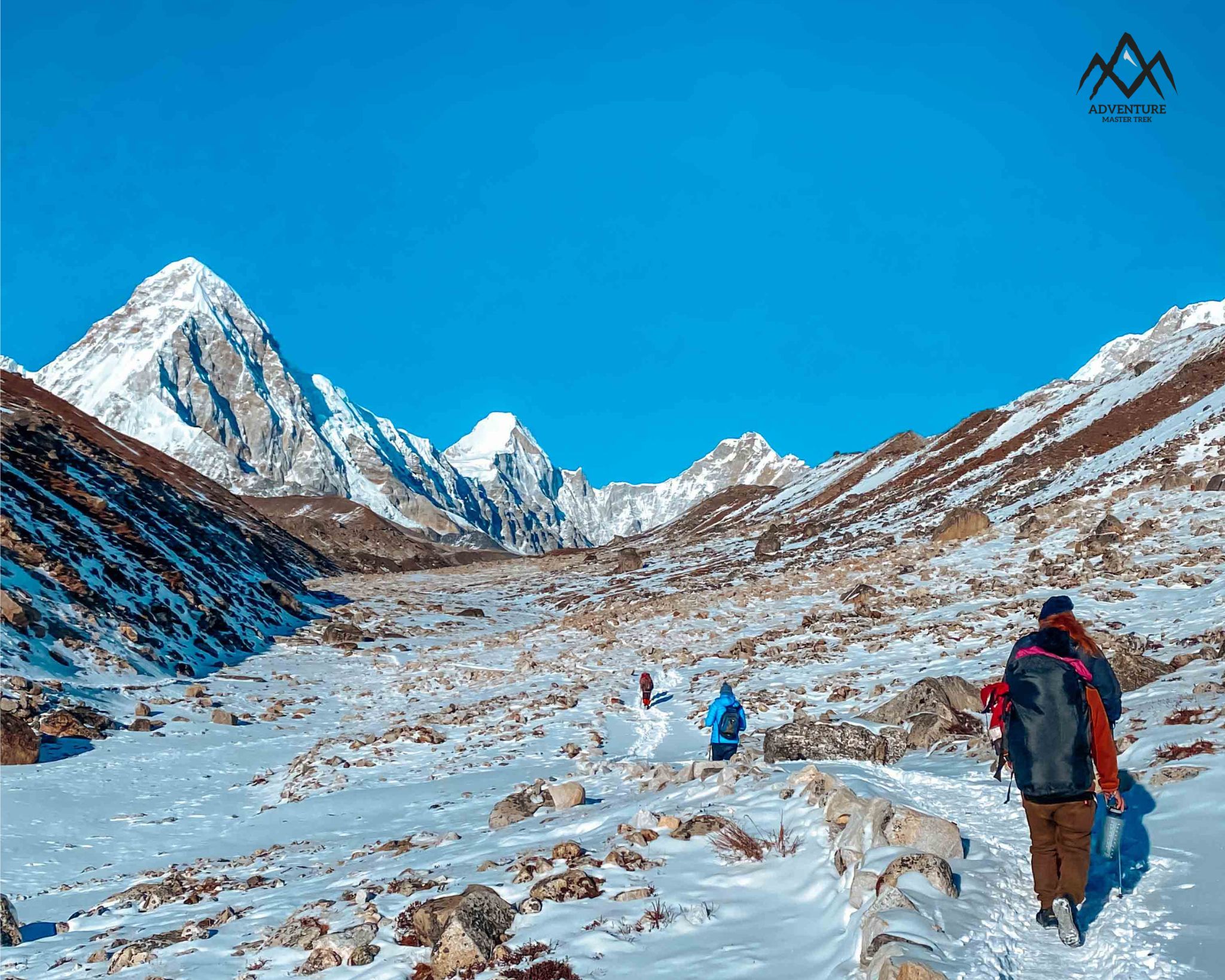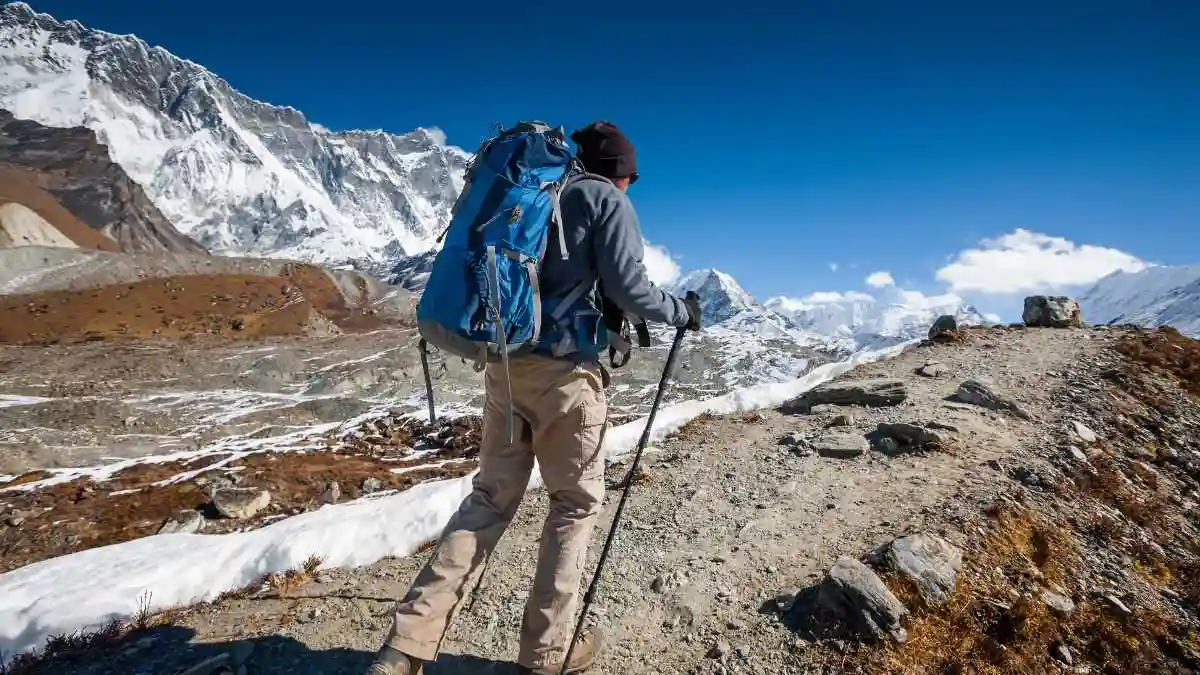If you love the mountains & are an adventure enthusiast, then we know that the Everest Base camp trek is on your bucket-list! By now you would obviously know trek promises breathtaking views and challenging hikes, and an absolutely unmatched, profound sense of accomplishment.
This year we decided to tick the EBC trek off our bucket list. Here is how it went.
We have put together a comprehensive guide on how to prepare for the Everest Base Camp trek.

-
Physical Preparation
a) Cardiovascular Endurance
The Everest Base Camp trek demands strong cardiovascular fitness status. We started with a basic, structured training regimen eight months before our trek. Please note this was not just plain simple walking, this needed a a progressive routine and we used the services of a good gym trainer here to whom we expressed our intention of the EBC. Our routine included activities like running, cycling, swimming, sometimes even rowing to improve our heart and lung capacity. We stayed consistent with 30 minutes of cardio exercise 3-4 times a week.
b) Strength Training
We soon realised that strength training would be very important for manoeuvring the uphill climbs and the rugged terrain. We made sure that we included exercises that build leg strength – such as squats, lunges, and step-ups. Strengthening your core exercises with exercises like planks and sit-ups helped us maintain stability and balance during our trek. We did this about 2-3 times a week. Cardio and strength also helped us train ourselves mentally and made us more confident of being able to complete the trek.
c) Practice Hiking
This helped a lot! We got accustomed to hiking by choosing trails with varying inclines and terrains and we did this twice a month over the weekends. This was a good way of measuring how is the exercise changing our body strength and capabilities – the EBC is in no way comparable to the hikes in your neighbourhood, but it will make you comfortable with hikes and inclines and out you in the rhythm of things. We even practiced hiking with a loaded backpack to mimic the weight we would carry during our actual trek. Gradually increasing the incline of your practice hikes will equip with enormous strength and confidence.
d) Altitude Training
Now this was the crucial bit. While we could not really replicate the altitude of Everest Base Camp, we did prepare our body for higher elevations. We made use of an extended weekend and took off to the hilly terrains on a 5-day trip – we participated in the local treks there. This showed us what the real deal would be like. Some aspirants also use altitude training masks to acclimate, though their effectiveness is debated.

-
Gear and Equipment: The one thing which will save your life after your Sherpa.
a) Footwear
It cost us some decent dollars, but investing in high-quality trekking boots that provide good ankle support and traction made all the difference. They were one of the key reasons why we could walk and trek in the EBC terrain. Also, very important is to make sure that they’re well broken in before your trek to avoid blisters. Waterproof boots are also a good choice, given the unpredictable weather – try making this a non-negotiable.
b) Clothes
Layering is always the key to staying comfortable in varying temperatures and wind conditions. Your essentials layers should include:
- Base Layer: Moisture-wicking underwear and thermal tops.
- Middle Layer: Insulating layers like fleece or down jackets.
- Outer Layer: Waterproof and windproof jackets and pants.
- Accessories: Hats, gloves, and neck gaiters.
c) Sleeping Gear
We opted for a sturdy, high quality sleeping bag, rated for cold temperatures (you can choose between down or synthetic). My partner also carried a sleeping bag liner for extra warmth. Try to stay away from bulky bags.
d) Trekking Poles
Trekking poles are a mut – they helped us stay balanced and reduced the strain on our knees, especially on our way down. We chose adjustable poles with shock absorption features.
e) Other Essentials
A blog we read online, recommended that we pack other essentials such as a headlamp, first aid kit, water bottles or hydration system, sun protection (sunscreen, sunglasses), and a multi-tool. So just passing the goodness and sharing the information here – we are glad we carried these in addition to a good quality backpack.

-
Health and Safety
a) Vaccinations and Health Check
Depending on the requirements in y our country and your health status, consult your doctor about necessary vaccinations and health precautions. Common recommendations include vaccinations for hepatitis A and B, typhoid, and possibly rabies. It is very crucial that you discuss any pre-existing health conditions with your healthcare provider.
b) Acclimatization
Altitude sickness is a real concern and it can strike a new aspirant or a decade old veteran alike! We made room for adequate acclimatization by ascending slowly, without any rush or pressure. The Golden rule in the circuit is, “climb high, sleep low” – this gives your body time to adjust. We looked out for symptoms of altitude sickness – headaches, nausea, and dizziness. If your symptoms become very severe, then descend immediately and seek medical attention. Your Sherpa guide will be your most crucial resource here.
c) Hydration and Nutrition
We made sure that we stayed hydrated by drinking plenty of water, at least 3-4 litres a day. You could also have an occasional glass of an Oral Rehydration Solution to keep your electrolytes going. We strictly avoided alcohol and caffeine – they can dehydrate you. Also, nutrition is extremely crucial; from 6 months prior to the trek, we made sure that we consciously ate a well-balanced diet eat a balanced diet with a good mix of carbohydrates, proteins, and fats. The dal bhat served during the treks kept us going. Adopting a high prana diet was very helpful to us. We also packed high-energy snacks like nuts, dried fruits, dates trail mixes and energy bars.
-
Mental Preparation: The difference between doing the trek or not
a) Set Realistic Goals
We realised that it was crucial to understand the physical and mental challenges of the trek. We started by setting realistic goals even during our training and being mentally prepared for long days of hiking. This helped us stay motivated and resilient even during the tough stretches.
b) Positive Attitude Helps
A positive mindset can make a huge difference, especially when the going gets tough during the EBC trek. The weather conditions can throw a curveball or two at times. Bu we embraced the journey and kept our focus on the experience rather than just the destination. This helped us turn uncertainty into adventure.

-
Logistics and Permits
a) Permits and Documentation
The EBC trek calls for several permits for the trek, including the TIMS (Trekkers’ Information Management System) card and the Sagarmatha National Park entry permit. We had a good travel company/trekking agency and they organised it all with the local offices in Kathmandu.
b) Choosing a Trekking Agency
Some trekkers opt for self-organized trips and some urged that we do the same, but this being our first time, we chose to go with a trekking agency for convenience and safety. We found a very reputable agency that offers experienced guides & good support services. They had good reviews also. Word to the wise: Whether it is your first trip or the 10th, choose a reputed travel company and conduct your trek with a Sherpa instead of venturing alone. Be it AMS, recue ops or just basic self doubt – your Sherpa will help with all of them!
c) Travel Insurance
Travel insurance is so crucial that it should be made mandatory! We were careful to choose a policy which covers trekking at high altitudes (up to 5,364 meters/17,598 feet) and includes emergency evacuation. We recommend that you confirm these details with your insurance provider before departure.
-
Cultural Respect and Etiquette
a) Respect Local Customs
The Sherpa community is a very loving one. In return, one can make sure to respect the local culture and traditions of the Sherpa people. It will be good to dress modestly, seek permission before taking photos of people, and follow local customs and practices. Also, please respect the mountain and approach it with humility instead of arrogance.
b) Environmental Responsibility
e made sure that we followed the “Leave No Trace’ principles to minimize our impact on the environment. We carried our own trash, used designated toilets, carried re usable things as much as possible.

And Finally
Preparing for the Everest Base Camp trek is a daunting, yet exciting experience where we did everything ourselves – physical training, gear selection, health precautions, and mental readiness. And then we placed ourselves the strong hands of a reputable company. It is our hope that by following this guide and planning ahead, you too experience a rewarding and safe adventure. The trek is not just a physical journey to the foot of the highest peak in the world, but a journey into the deepest recesses of your own soul. May you experience the magic like we did. Happy trekking!

